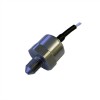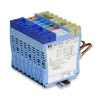Intrinsically safe differential pressure sensors with EEx certification for use in potentially explosive atmospheres with an intrinsically safe zone barrier.
Products
 DPT200 Pressurised Tank Level Differential Pressure Transmitter - Pressurised tank liquid level differential pressure cell transmitter for process plant storage.
DPT200 Pressurised Tank Level Differential Pressure Transmitter - Pressurised tank liquid level differential pressure cell transmitter for process plant storage. DPT200 High One Side Overload Differential Pressure Sensor - DP transmitter for measuring pressure difference between two pressure points which can tolerate up a very high overload pressure independently on either the positive or negative side port or both together at the same time.
DPT200 High One Side Overload Differential Pressure Sensor - DP transmitter for measuring pressure difference between two pressure points which can tolerate up a very high overload pressure independently on either the positive or negative side port or both together at the same time.
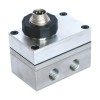 PD39X High Differential Pressure Transmitter
PD39X High Differential Pressure Transmitter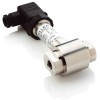 PD33X High Accuracy Differential Pressure Transmitter
PD33X High Accuracy Differential Pressure Transmitter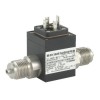 DMD331 Compact Differential Liquid Pressure Sensor
DMD331 Compact Differential Liquid Pressure Sensor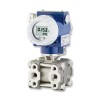 XMD Process Plant DP Cell Differential Pressure Transmitter
XMD Process Plant DP Cell Differential Pressure Transmitter
Applications
 -3 to 4 mbar dp range 4-20mA ATEX approved biogas pressure sensor for process control use on a 1bar line - A low range differential pressure sensor for process control use to measure pressure of biogas over a range of -3 to 4 mbar diff on a 1 bar biogas line from two 1/4 NPT female process connections, and sending the corresponding 4-20mA signal through the weatherproof cable electrical connection.
-3 to 4 mbar dp range 4-20mA ATEX approved biogas pressure sensor for process control use on a 1bar line - A low range differential pressure sensor for process control use to measure pressure of biogas over a range of -3 to 4 mbar diff on a 1 bar biogas line from two 1/4 NPT female process connections, and sending the corresponding 4-20mA signal through the weatherproof cable electrical connection. 1 inH2O differential intrinsically safe 4-20mA out air pressure sensor for HVAC use - A low range intrinsically safe pressure sensor for HVAC use to measure pressure of air over a range of 0 to 1 inH2O differential from two G1/4 female process connections, and sending the corresponding 4-20mA signal through the M20 x 1.5 cable gland electrical connection.
1 inH2O differential intrinsically safe 4-20mA out air pressure sensor for HVAC use - A low range intrinsically safe pressure sensor for HVAC use to measure pressure of air over a range of 0 to 1 inH2O differential from two G1/4 female process connections, and sending the corresponding 4-20mA signal through the M20 x 1.5 cable gland electrical connection.
 Low range ATEX approved 100 Pascal range DP transmitter
Low range ATEX approved 100 Pascal range DP transmitter ATEX rated room ±100 Pa differential pressure transmitter
ATEX rated room ±100 Pa differential pressure transmitter Engine test cell fuel filter 2.5 bar differential pressure sensor with ATEX approval
Engine test cell fuel filter 2.5 bar differential pressure sensor with ATEX approval
Related Product and Application Guides
Related Help Guides
- What can a DP sensor be used to measure beyond differential pressure?
- How do you measure flow rate with a dp cell
- Measuring flow rate of a liquid or gas using a dp sensor
- Measuring density of a liquid using a dp sensor
- Measuring liquid level in a tank using a dp sensor
- Measuring gauge pressure using a dp sensor
- Measuring absolute pressure using a dp sensor
- Measuring barometric pressure using a dp sensor
- Measuring vacuum as an absolute range using a dp sensor
- Measuring vacuum as a negative gauge pressure using a dp sensor
- Considerations for monitoring Landfill Water Level

